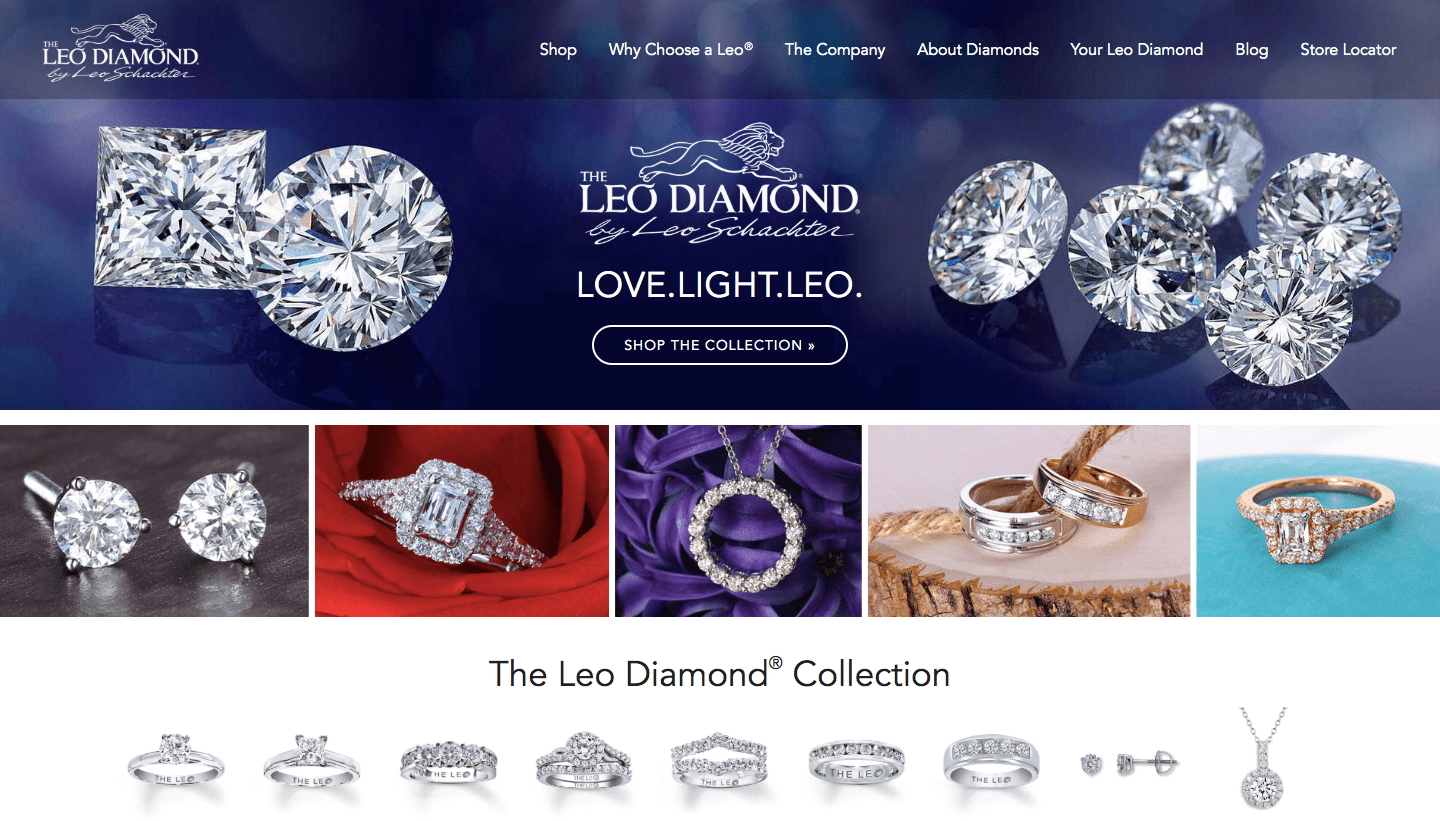This article has mentions of products from one or more companies, and I may receive compensation if you purchase those products following reading my recommendations.

If you’re on the lookout for a beautiful and bright diamond, you might be considering buying from Leo Diamonds. After all, their marketing statement extols the virtues of their products as being “the first diamond independently certified to be visibly brighter by GemEx”.
However, it’s important to exercise a lot of caution if you’re swayed by this claim. Here, we take a closer look at what you need to know about Leo Diamonds so that you can make a well-informed purchasing decision.
The History of Leo Diamonds
Leo Diamond’s history began more than half a century ago when Leo Schachter founded the family business. Taking his inspiration from his own father who was himself a Antwerp-educated diamond cutter, Leo’s business was a great success and has stayed in his family ever since. The Leo Diamond is the Leo Schacter family’s own special cut diamond and it is designed to be a symbol of lasting love.
Traditional round diamonds have 57 facets, but the Leo diamond is different and distinct. Modified to feature 66 facets, the result is intended to be extra sparkle and glamor.
However opinions on this are divided. Some say that the extra facets cause the diamonds to lose their balance of fire and brilliance, resulting in a chaotic “crushed ice” appearance. A preference for the Leo Diamond is, therefore, a matter of personal taste. They are certainly distinctive and step away from the norm, which is attractive to some.
The Quality and Brightness of the Leo Diamond
The Leo Diamond’s major marketing claim is that it is “visibly brighter”, but does this hold true?
It’s important to be aware that Leo diamonds aren’t actually the world’s brightest diamonds – in fact, Leo Diamond is the only company that has actively sought out certification for that particular attribute. The brightness is actually assessed with a GemEx sales tool called the Brilliance Scope which simulates a spot-lit environment, taking 5 light performance difference measurements from several angles in order to replace the movement of the diamond when it is worn. So, it’s a little misleading.
While mainly reliable, the Brilliance Scope is only capable of assessing light performance under spot lighting conditions and not in any other lighting environment. While this sales tool is effective thanks to its ability to give tangible data, it’s important to be aware that this data is only applicable under a very specific light performance and one which doesn’t mirror everyday life.
With this in mind, the data gleaned from the Brilliance Scope isn’t very helpful when compared with other kinds of performance reports like hearts and arrows, IdealScope, ASET and Sarine. Also, the additional facets in a Leo Diamond could be there to remove flaws and chips in the diamond itself – something that needs to be borne in mind when making a purchase.
Certification of the Leo Diamond
Leo Diamond use a number of grading labs when it comes to certifying their diamonds, including the IGI, GSI and GIA. Unfortunately, the IGI and GSI are well-known to inflate their grades and also lack the consistency and integrity of AGS and GIA certified diamonds. Leo Diamond also has inconsistent cutting standards. Additional facets cannot guarantee good sparkle since the diamond has to be perfectly balanced and precisely cut to unleash its brilliance and fire and, unfortunately, some Leo Diamonds have negligible light return and poor quality of cut.
The Price of Leo Diamonds
Leo Diamonds aren’t cheap, and with a lack of transparency and information supplied by the seller about the quality of the diamond being used, it can be difficult to know whether you’re getting good value for money. Without suitable independent certification from an internationally recognized lab, it’s impossible to be confident that what you’re buying is worth the price that you pay.
Should I Buy A Leo Diamond?
In a nutshell, Leo Diamonds have high premiums which the brand claims to be justified since the diamond is technically “brighter”. This is a very vague promise indeed, only evidenced under unnatural conditions, and cannot be certified in any meaningful way. This statement lures in inexperienced buyers and that concerns us because honesty and quality should speak for themselves.
It’s recommended that you ask some pertinent questions if you’re keen to buy a Leo Diamond and only accept one that comes with GIA certification.
It’s also wise to get an expert to check the diamond over before you buy it. In too many cases, you are merely paying for the Leo Diamonds brand name and its claim that the diamond is brighter than any other which we already know isn’t actually the case.
